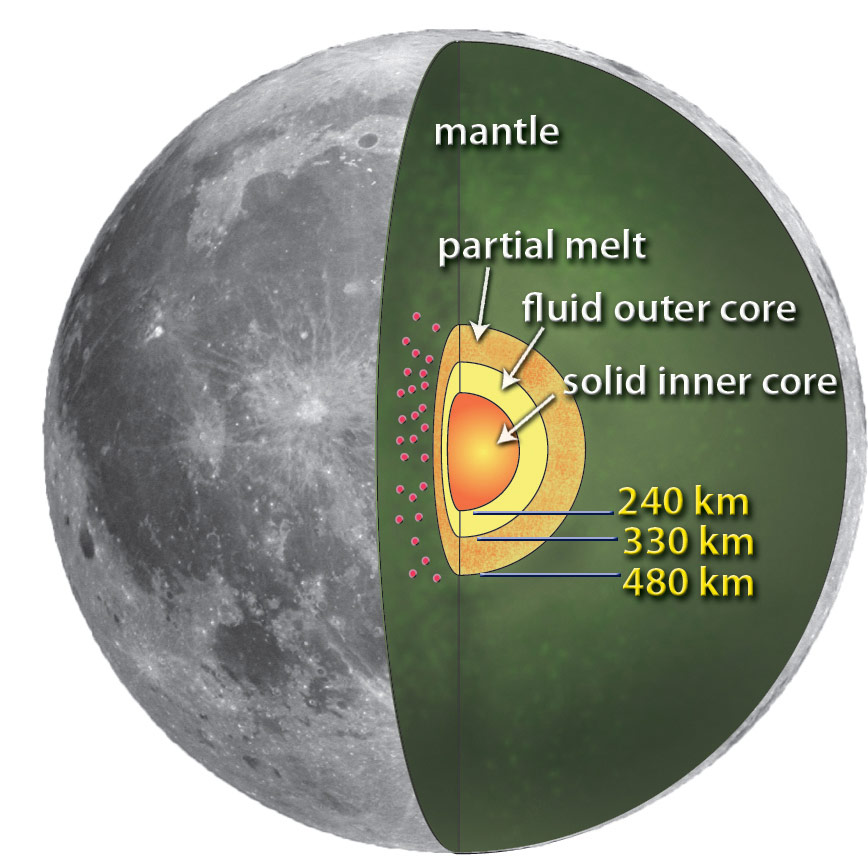 Just like the earth, the moon has layers. There are three distinct layers of the moon namely the crust, the mantle, and the lunar core.
Just like the earth, the moon has layers. There are three distinct layers of the moon namely the crust, the mantle, and the lunar core.
Crust
The crust is the outermost layer of the moon and it consists of a dusty outer rock layer which is known as the regolith. The regolith is a rocky layer that looks like broken concrete which has been blasted apart and fused back together. The crust is approximately 37 miles in thickness on the side which faces the earth and approximately 62 miles on the other side. The rocks found on the crust are almost the same as those found on the crust of the earth. The only difference is the fact that the rocks have more aluminum and titanium than those found on earth. The moon's crust also contains some magnetism like the crust of the earth. Studies show that this layer mainly comprises of silicon, iron, magnesium, oxygen, calcium and aluminum.
Mantle
This is the layer between the core and the crust of the moon. The mantle is divided into two parts. The first layer of the mantle is the rigid lithosphere (upper mantle). This layer of the moon is estimated to be 620 miles in thickness, and it is not hot enough to flow.
The second layer of the mantle is the athenosphere (lower mantle). The athenosphere is not rigid like the upper mantle. The innermost parts of the athenosphere are hot enough to flow. The athenospheric layer is capable of transmitting seismic waves which cause quakes. The mantle is believed to be largely comprised of olivine, orthopyroxene and clinopyroxene minerals.
Core
This is the innermost layer of the moon which consists of rock that is very rich in iron alloyed with small amounts of nickel and sulfur. This layer is very small with a radius of about 225 miles or less. The moon's core makes only 2-4% of the total mass of the moon. This layer does not create a big magnetic field. The lunar core is believed to be partially molten. The magnetic field of the moon is estimated to be 1/10 millionth of the magnetic field of the earth.
